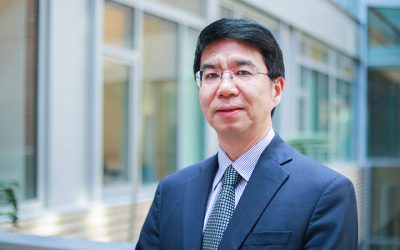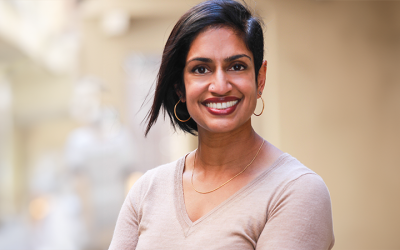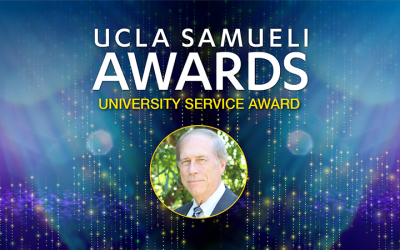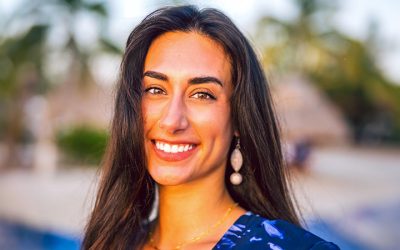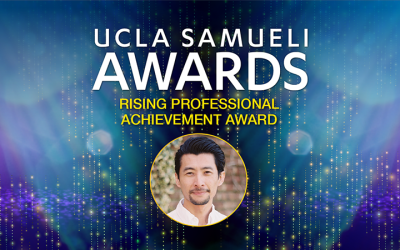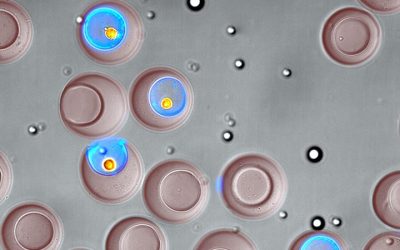
HEADLINES – UCLA Samueli In The News 2016
December 2016
 Balloon-bodied bipedal bot bounces beautifully | Popular Science
Balloon-bodied bipedal bot bounces beautifully | Popular Science
UCLA Engineers, led by Professor Dennis Hong, are developing a balloon-bodied robot that always stays upright. Also in BBC News; Gizmodo; Tech Crunch; Motherboard and IEEE Spectrum.
 Foundation funds first of 50 fellows in $34 million plan | IEEE Spectrum
Foundation funds first of 50 fellows in $34 million plan | IEEE Spectrum
Professor Mona Jarrahi was one of five recipients of The Moore Foundation’s inaugural class of inventor fellows. Also in Silicon Valley Business Journal; Venture Beat.
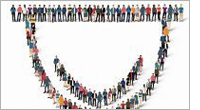 Policy and Social Implications of Named Data Networking | Communications of the ACM
Policy and Social Implications of Named Data Networking | Communications of the ACM
A UCLA-led team of computer scientists write on the potential social impact of a proposed future Internet architecture. Also in Motherboard.
 For robots, artificial intelligence gets physical | ScienceNews
For robots, artificial intelligence gets physical | ScienceNews
To work with humans, machines need to sense the world around them. UCLA Engineering Professor Veronica Santos and her former student Randall Hellman are featured.
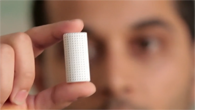 UCLA team turns CO2 into building material | BNN
UCLA team turns CO2 into building material | BNN
UCLA researchers are working on a building material that is made from carbon dioxide emissions. They are semi-finalists in the Carbon XPrize challenge.
 Alarm grows as smart home technology risks proliferate | CNBC
Alarm grows as smart home technology risks proliferate | CNBC
CNBC interviewed internet pioneer and UCLA computer science professor Leonard Kleinrock on the hacking of smart home technologies.
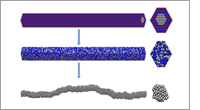 Jagged wires said to enable better fuel cell performance | New Electronics
Jagged wires said to enable better fuel cell performance | New Electronics
An international team, led by UCLA and Caltech researchers, has demonstrated that, by using jagged platinum nanowires, the amount of precious metal used as catalysts in hydrogen fuel cells could be reduced significantly.
 How the Internet was born: from the ARPANET to the Internet, Part 4 | The Conversation
How the Internet was born: from the ARPANET to the Internet, Part 4 | The Conversation
A four-part series on commemorating the anniversary of the first ever message sent across the ARPANET, the progenitor of the Internet in Oct. 1969, from UCLA to Stanford Research Institute. Part 1, Part 2, and Part 3.
September 2016
 Four stiff challenges Elon Musk will have to overcome to turn his Mars dream into reality | Los Angeles Times
Four stiff challenges Elon Musk will have to overcome to turn his Mars dream into reality | Los Angeles Times
The challenges are immense, says Richard Wirz, director of the UCLA Plasma and Space Propulsion Lab, but also “inspiring.
“We need people out there like Elon Musk that are inspiring the next generation of engineers,” he said. “It’s hard to get students into STEM fields if we’re constantly saying, ‘No you can’t do that.’ Let’s keep letting visionaries like this lay out blueprints, and then let’s see what we can do.”
Wirz was also quoted in an L.A. Times story on the day of Musk’s announcement.
 The 2016 Popular Mechanics Breakthrough Awards | Popular Mechanics
The 2016 Popular Mechanics Breakthrough Awards | Popular Mechanics
The research, innovators, scientists, and students who’ve made the world a little better this year. More Sensitive Scanners for the Medical Industry: Mona Jarrahi, associate professor of electrical engineering, received a Popular Mechanics Breakthrough award for her work to “increase the sensitivity of terahertz scanners—those body scanners you get to pose in every time you go to the airport—by five orders of magnitude.”
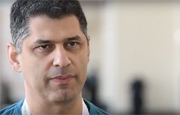 Fish, Feathers, Fluid, Phlegm and Freaks | Inside Science (article with video)
Fish, Feathers, Fluid, Phlegm and Freaks | Inside Science (article with video)
Featuring five new stories from the field of fluid dynamics that involve floating, preening, swimming, spitting and sneezing
(Professor Kavehpour’s segment in the video starts at starts at 4:30)
“In general I’m an observer of nature; and when I was watching a documentary on PBS, there were a lot of penguins jumping in and out of water and splashing, there were a lot of droplets around. I was very curious that none of these droplets stick to their feathers, and it’s minus 40 degrees C outside but you don’t see any ice form on their feathers,” (UCLA mechanical and aerospace engineering professor Pirouz) Kavehpour said. Kavehpour’s lab found that the waterproofing preen oil found in many birds was especially water-repelling, or hydrophobic, in Antarctic penguins. Moreover, the penguin feathers featured nanostructures that have trapped air inside which help form water droplets on the surface of the penguin’s feathers rather than the feathers becoming saturated. Kavehpour realized that this was due to a geometric reason similar to that of the science behind heat transfer. These features delay freezing long enough that penguins can simply shake off excess droplets from their coats.
 California’s sustainable future begins with renewable energy | 89.3 FM KPCC
California’s sustainable future begins with renewable energy | 89.3 FM KPCC
Following Governor Jerry Brown signing two climate change bills into law, KPCC 89.3 FM spoke with two UCLA experts on sustability, incuding Richard Wirz, professor of mechanical and aerospace engineering.
What obstacles are in the way of California shifting to more renewable energy?
Wirz: “We need to store that energy, because unlike a fossil fuel facility where we actually can change the output based on the needs of the consumers, we don’t have that luxury with that wind or with the sun. Wind has that inherent challenge of variability, that’s why we need to work on storage technologies…”
August 2016
Technique may quickly detect diseases, cancer with portable device | UPI
“Researchers at the University of Los Angeles California created a test that detects biomarkers for disease in about 10 minutes, and they have plans to pair it with a portable device to make it even easier to use.
A dangerous confluence on the California coast: beach erosion and sea level rise | The Los Angeles Times
Last week, (Bob) Guza (of Scripps Institution of Oceanography at UC San Diego) introduced me to one of his former post-doc students, Timu Gallien, who was test-driving a drone that will simplify the mapping of beach levels at Torrey Pines — technology that could be put to use up and down California’s 1,100-mile coast. If a road is threatened or a development proposed, beach erosion history will make for smarter planning. This is “critical if we want to understand our future vulnerabilities,” said Gallien. She is a coastal flooding expert now teaching at UCLA, but still collaborating with Guza, whom she called an international giant in his field.
Nanostructures harness surface tension for macroscale applications | Nanotech Web
Advances in nanofabrication have shifted surface tension engineering from the realms of chemistry to nanomechanics. As (UCLA mechanical and aerospace engineering professor) CJ Kim told attendees at the Nano Korea 2016 plenaries, nanomechanical surface tension design has a huge role to play in a range of technologies from ink-jet printing and superhydrophobic surfaces, to drag reduction in boat design.
July 2016
Traveling to Mars with immortal plasma rockets | The Conversation
UCLA mechanical and aerospace engineering graduate student Gary Li wrote an article in The Conversation on the next generation of inter-planetary rockets. It’s based on his presentation at the UC-wide 2016 grad slam. Li was UCLA’s winner this year.
Werner Herzog’s Web: What happens when the iconic director makes a promotional film about the Internet | Wired
The new film begins one building over from here, in room 3420 of UCLA’s main engineering building. That room houses the first machine ever to send an electronic message via what would become the Internet. (The message—“LO,” an interrupted transmission of the “LOGIN” prompt—gives the film its title.)
Blue Dot 19: The Sierra Snowpack | North State Public Radio (public radio out of Chico State University)
This week on Blue Dot, we look at how we measure the amount of snowpack in the Sierra Nevada. We hear from Steve Margulis, a hydrology professor at the University of California, Los Angeles, and Michael Durand, a professor at Ohio State University. They both help give us the numbers that tell how much water (we think) is in the Sierra Snowpack, how much meltwater we’ll have to use as a state, and how long it will take the snowpack to recover from drought.
Behzad Razavi On The Pleasure Of Finding Things Out | The Huffington Post
The Huffington Post is carrying interviews of prominent Iranian Americans conducted by the West Asia Council. UCLA electrical engineering professor Behzad Razavi, who specializes in microelectronics and microchip design, is the latest interviewee. Razavi discussed the influence of famed theoretical physicist Richard Feynman on his career, and how every email at some point may go through a circuit topology first developed in his lab.
A New Way of Looking at Solar Cells | MIT Technology Review
A big step in helping perovskites reach their potential as the basis for far cheaper and more efficient types of solar cells came this week from a team at Lawrence Berkeley National Laboratory.… Now the challenge is to actually make perovskite cells with the desired facets all aligned in parallel to boost the overall efficiency of the device.
“I think the ultimate question would be how to control the growth of the perovskite crystal,” says Yang Yang, a professor of materials science and engineering at UCLA. “That is not an easy task.”
June 2016
Does California shutdown mean the end of nuclear power? Not so fast | Christian Science Monitor
“Nationally, it’s a mixed bag,” notes Ali Mosleh, a professor of engineering at the University of California, Los Angeles and a former appointee of the U.S. Nuclear Waste Technical Review Board. “Plants are shutting down, but there’s also construction here and there. And there’s momentum for small reactors and next-generation reactors.”
Research: California Years Away From Making Drought Recovery | The Associated Press
It could take California four years to recover from the most severe drought on record, even if the next several winters bring above-normal snowfall to the Sierra Nevada, researchers said. One winter of El Nino storms that delivered a near-normal snowfall wasn’t enough to make up for the deficit from four consecutive dry years in the Sierra, a critical water supply statewide, the study says.
The lack of snow forces water suppliers and farmers to draw heavily on reservoirs, groundwater and other sources, said Steve Margulis, a civil and environmental engineering professor at the University of California, Los Angeles who led the study.
“The deficit we have is so large it is very, very unlikely to recover in one year,” he said.
Also carried in: the Los Angeles Times, CNBC, the San Jose Mercury News, Univision, the San Francisco Chronicle, Capital Public Radio (Sacramento) and North State Public Radio (Chico, Calif.).
ECTC 2016: Is the Life after Moore’s Law? | 3DinCItes
“If you can’t scale the chip, scale something else,” (UCLA electrical engineering professor Subramanian Iyer said. “Nothing in the history of civilization has scaled so fast as silicon. But package and board features have scaled modestly.”
This is the focus of his work at UCLA – to scale the package… To recap – the goal is to develop an app-like environment for hardware that can: Cut time-to-market by 5-10x; Cut NRE cost by 10-20X; Allow extreme heterogeneity including extensions to cyber-physical systems; and develop a sophisticated manufacturing workforce.
May 2016
How Neanderthal DNA Helps Humanity | Quanta Magazine
In 2014, Nielsen and colleagues found that Tibetans or their ancestors likely acquired the unusual DNA sequence from Denisovans, a group of early humans first described in 2010 that are more closely related to Neanderthals than to us. The unique gene then flourished in those who lived at high altitudes and faded away in descendants who colonized less harsh environments. “That’s one of the most clear-cut examples of how [interbreeding] can lead to adaptation,” said Sriram Sankararaman, a geneticist and computer scientist at the University of California, Los Angeles.
Power plant proposals for Southern California spark an energy debate | Los Angeles Times
The alternative energy industry is innovating at a phenomenal rate, said Rajit Gadh, founder and director of UCLA’s Smart Grid Energy Research Center.
But he urged patience: “I would love to see higher and higher renewables, but I think we have to take the correct steps to get there. And as an engineer, I would like to make sure we do the data measurements and we do the right things so that utilities and everybody else are satisfied that this can be done.”
To Make Fresh Water without Warming the Planet, Countries Eye Solar Power | MIT Technology Review
“Another reason it’s so expensive is that big solar arrays need a lot of space. That means, though, that solar-powered desalination could be more economical in small settings. For example, in California’s drought-ridden Central Valley, the Water Technology Research Center at UCLA is building several solar-powered facilities that will desalinate brackish agricultural wastewater for towns that lack sufficient supplies of clean water. These facilities “are small enough for solar energy usage,” says UCLA professor Yoram Cohen, who heads the project. “You couldn’t do this in Carlsbad because real estate is too expensive.”
This Small Black Strip Is a Clock Accurate to 270 Quintillionths of a Second | Gizmodo
If you want to time something accurately, you could do worse than this new optical clock. Because it can measure intervals of time with a precision of 270 quintillionths of a second (that’s 0.00000000000000027 seconds). Optical clocks work by measuring the frequency changes in light that result from shifting energy states of electrons in molecules. Usually, they’re rather big clunky devices, about the size of a desktop computer, because they make use of large, reliable lasers. But a team from UCLA has been able to shrink down the hardware using silicon chip technology to create solid-state microresonators that perform a similar job. That’s allowed them to create a device that measures just 0.06 cubic inches.
Also carried in the Daily Mail (U.K.).
Bell Labs Looks at Claude Shannon’s Legacy and the Future of Information Age | IEEE Spectrum
“He was the engineer-mathematician-theoretician-intuitive-genius,” said Leonard Kleinrock, a professor of computer science at UCLA who was a Ph.D. student at MIT under (Claude) Shannon. “He opened up vast new domains of science and engineering,” Kleinrock, an Internet pioneer who helped develop packet switching, said. “He set the standards that others have yet to achieve.”
Wireless Networks Should Provide Cell Records to Officers After an Accident | The New York Times
John Villasenor, UCLA professor of electrical engineering, public policy and management, wrote an op-ed column in the New York Times Opinion section’s “Room for Debate” feature, on privacy issues surrounding New York state legislature’s proposed bill to allow field testing of cell phones and electronic devices following a traffic accident.
April 2016
Are you ready for the net earthquake | Scripps Media
As scientists learn more about the potential damage of strong earthquakes, building codes and infrastructure has improved. This has been especially true in Northern California since the Loma Prieta earthquake of 1989, according to UCLA Professor of Professor of Department of Civil and Environmental Engineering Jonathan Stewart.
“Our understanding of seismic risk increases over time,” Stewart said. “We’re learning about new faults; we’re learning about the induced seismicity in the east is getting a lot of attention because there are a lot of unknowns… If you go to a more active region like California or along the West Coast, we have buildings that are designed for many different levels of building codes and seismic practices. Los Angeles is a city with a lot of seismic risk, but we have old buildings that were built before we understood how these structures respond.”
Cutting Edge The final frontier: cheap space travel | Los Angeles Times
“Experts say liquefied natural gas, which is a commercially available form of methane, could have several advantages as a rocket fuel. Blue Origin has said its wide availability and low cost would enable an “extended engine development test program.”
Methane is also clean, meaning it’s less likely to clog fuel lines inside the engine. That would reduce the type of rigorous cleaning needed to clear those particulates and make it easier for reusability, said Ann Karagozian, UCLA professor of mechanical and aerospace engineering… “This could be a factor in the company’s plans for Mars, as SpaceX has said methane could be synthesized in the Martian atmosphere. “Methane has those advantages for reusability,” UCLA’s Karagozian said. “But it is not standard. It’s not a sure thing by any means.
March 2016
3-D printing: Blink and You Miss It | DW (Deutsche Welle)
UCLA bioengineering professor Dino Di Carlo and grad student Jerry Wu were interviewed by Germany’s international broadcaster about their research demonstrating the 3-D printing of complex objects at microscopic scales.
Our Ancestors and Mysterious Ancient Humans | Science
UCLA assistant professor of computer science Sriram Sankararaman and Harvard Medical School’s Davi) Reich found a hot spot of Denisovan ancestry in an unexpected place: South Asia. “It’s about 10% of what we see in the Oceanians,” Sankararaman explains. Also carried in CNN and Discovery News.
Who Among Us Has Neanderthal, Denisovan DNA? | FoxNews.com
“It’s a very comprehensive look at how the modern human population evolved, how we got to where are today,” said UCLA assistant professor of computer science Sriram Sankararaman, a co-author on the genetics study that appeared in Current Biology. “These interbreeding events introduced very different genes into modern humans so a major question for us in human genetics is to figure out what has been the impact of these genes.” Also carried in the Sydney Morning Herald and CBS News, and mentioned in the Christian Science Monitor, the Daily Mail (UK) and ABC (Australia).
February 2016
Why Use a Package? | Semiconductor Engineering
Subramanian Iyer, distinguished chancellor’s professor in UCLA’s Electrical Engineering Department—and a former fellow and director of the systems scaling technology department at IBM—on the future of chip scaling: “If you think about the system as a whole, then shrinking the package and the board has got to be an integral part of Moore’s Law. That’s what we’re trying to do here at UCLA.”
UCLA Open-sourced a Powerful New Image-detection Algorithm | PC World
Image recognition has become critical in applications ranging from smartphones to driverless cars. UCLA recently opened up to the public a new algorithm that promises big gains.
Rise of the Robots | PBS Nova
How will human-like robots change our future and how we see ourselves? Dennis Hong, UCLA professor of mechanical and aerospace engineering, discusses the DARPA Robotics Challenge.
January 2016
Students Create Satellite for NASA | Daily Bruin (video)
UCLA students are working in conjunction with NASA to launch a satellite in 2017, with the goal of measuring electron losses in space. Aerospace student Reuben Rozario and mechanical engineering student Anthony Gildemeister from the student group ELFIN give an inside look at the on-campus construction of the satellite.
News
UCLA Computer Scientist Elected to American Academy of Arts and Sciences
Jason Cong, UCLA’s Volgenau Professor for Engineering Excellence, was one of five UCLA faculty members elected to the American Academy of Arts and Sciences
UCLA Civil and Environmental Engineer Heads LA County’s Chief Sustainability Office
For Rita Kampalath M.S. ’05, Ph.D. ’10, every day is Earth Day as the Los Angeles County’s chief sustainability officer. But when she first came to UCLA as a graduate student
UCLA Samueli Announces 2024 University Service Award
Every year, the UCLA Samueli School of Engineering selects and recognizes outstanding achievements by a number of its alumni, faculty members and students who have excelled in various fields.
Bruin Engineer Makes Waves Researching Microplastics in LA River
Jamie Leonard ’20, M.S. ’21 started working to mitigate plastic pollution in high school, taking part in an initiative to replace her school’s plastic water bottles with metal ones. Now a UCLA Ph.D. student, she has her eye on microplastics
UCLA Samueli Announces 2024 Rising Professional Achievement Award
Every year, the UCLA Samueli School of Engineering selects and recognizes outstanding achievements by a number of its alumni, faculty members and students who have excelled in various fields.
Advance in Immune Cell Screening Uncovers Receptors that Target Prostate Cancer
A recent UCLA study demonstrates a new process for screening T cells, part of the body’s natural defenses, for characteristics vital to the success of cell-based treatments.

